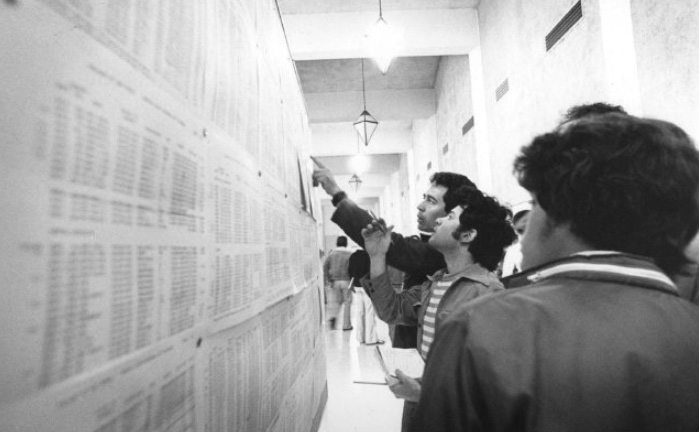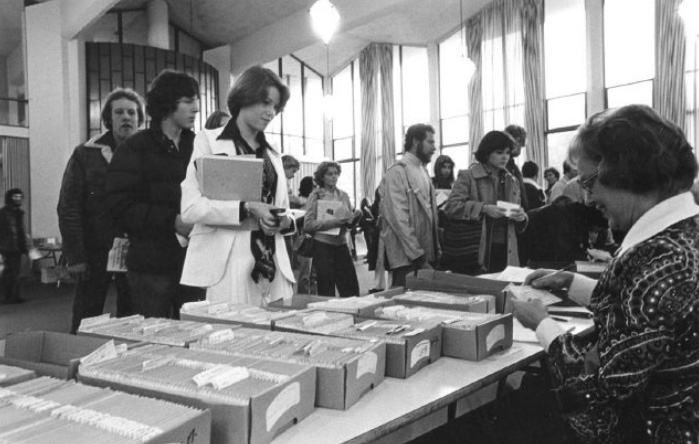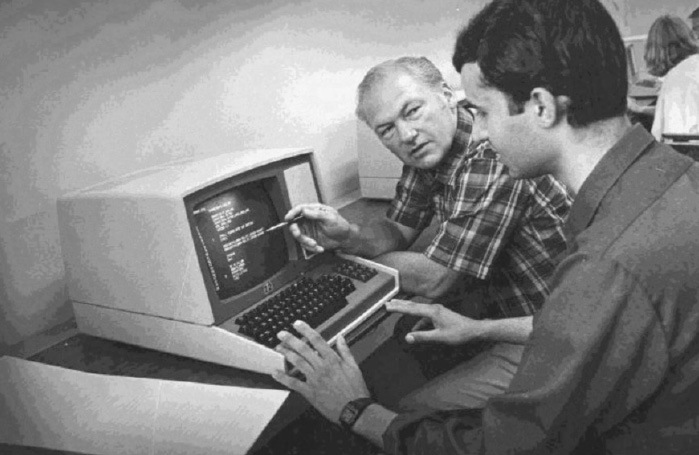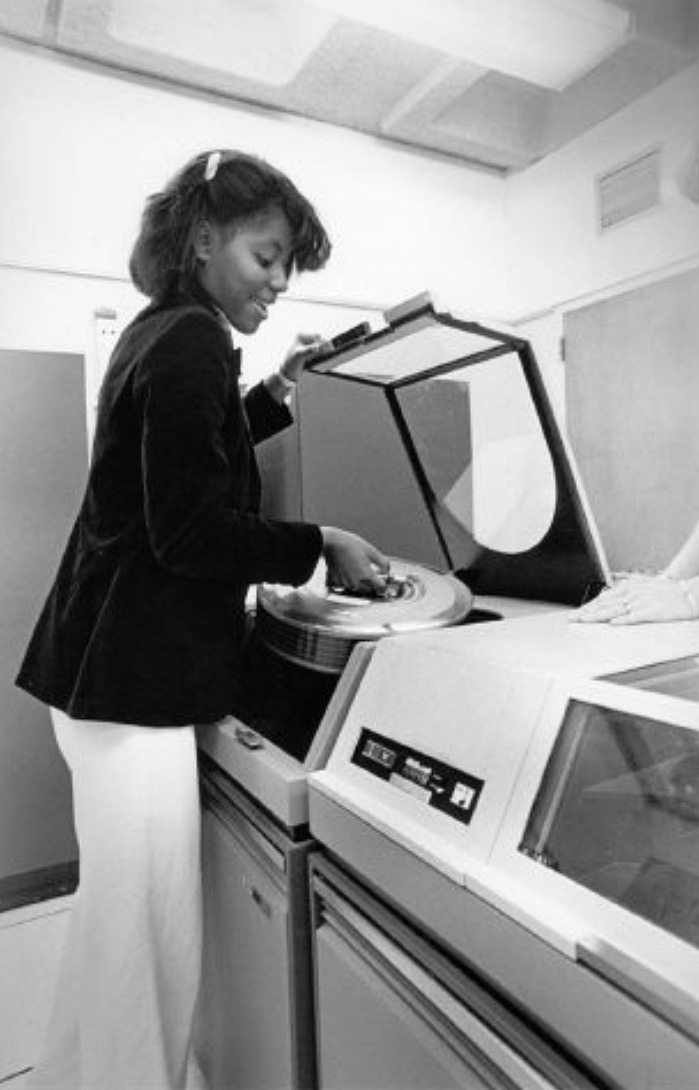Registration Then and Now
For decades, enrolling in classes meant waiting in line for bits of paper while dozens of ‘reg ladies’ scrambled to process them. Today’s replacement, WebSMART, turns 20 this year.
Today’s CSM students enroll in classes at their convenience, using laptops or mobile devices. (Depending on the course, they can also submit much of their schoolwork via mobile as well, using the Canvas course management platform.)
For most of CSM’s history, registration was much lower-tech and less convenient. It involved waiting in long lines for slips of paper, one slip for each class. While the lines began in the cafeteria or student union, they snaked out the door and into the chill early-morning wind of Coyote Point, Baldwin or College Heights. For popular courses, students started queuing before dawn.
After accumulating enough slips for a course load, students stood in another line to present the stack to a registration clerk and receive a paper “reg card” that proved their student status.
The advent of primitive computer registration in 1953, initially in CSM’s evening division, did not immediately change this front-end user experience.
That November, CSM replaced evening students’ index cards with 80-hole IBM punch cards called Hollerith cards, read by an IBM 533 input/output unit reader leased by the college. The card reader produced digital code that, read by a leased IBM 650 mainframe, produced rosters for each instructor’s class. (The punched-out holes, or “chads,” became unsanctioned confetti at football games and other celebrations.)
CSM was an early adopter of this new technology, which had come to market only four months earlier. In November 1957, CSM day students first registered via punch card as well.
Students still waited in long lines. Armies of temporary staff—often faculty wives dubbed “reg ladies”—were still hired before each semester to process, sort and log the punch cards. By 1967, the year before Cañada College opened and eased CSM’s overcrowding, students waited all night to register.
Eventually, the card reader was supplanted by an IBM 1401 machine that was smart enough to transcribe cards to magnetic tape for input and the tape to printer for output.
The system seems cumbersome, but it was more accurate than compiling records by hand, remembers longtime CSM staffer Joan Bell. The IBM 533 could punch 100 cards a minute or read 200 cards a minute, glacial by today’s standards but much faster than the quickest “reg lady.” The campus San Matean greeted the Hollerith cards and the elephantine mainframe with ecstatic joy. “CSM Enters the Computer Age!” it proclaimed.
Bell, wife of late language arts professor Jim Bell, was first hired by the District as a “reg lady.” She rose to respected positions in the Evening Division and in District administration. (Until the 1980s, day and evening classes were administratively separate.)
“Our office was open from 8 a.m. to 10 p.m.,” Joan Bell remembers. “It was the place a lot of people stopped by because we were there day and night. The punch cards and the new machines were exciting, and a lot of the newest procedures were instituted in the Evening Division. Martha Betts not only did the evening payroll on punch cards, but she taught evening classes on how to do it.”
In the 1980s, when networked computing made punch cards obsolete, students still waited in line for a campus visit with a temporary worker, who typed their desired classes into a PC terminal and printed out a schedule. The first PC-enabled registration in November 1982 processed thousands of students using only eight terminals, so it was still a bit of a wait. Students who didn’t need to speak to a counselor increasingly chose to register by mail. By 1990, more than half of CSM students did so.
Fewer people had computers than today, and the San Mateo County Community College District didn’t want anyone’s lack of IT access to be a bar to enrollment. It was still many years before students could register from their computers at home.
The day came in spring 1999 when students could register by phone, powered by a $4 million computer upgrade installed over three years in the early 1990s. SMART (“San Mateo Automated Registration by Telephone”) was the ancestor of today’s districtwide WebSMART system. Detailed SMART instructions in the Summer 1999 bulletin carried the fateful warning that would curtail the life of this service: “Note that many cordless and mobile phones do not work well with SMART.”
So, in summer 2002, SMART was replaced by WebSMART, a website that allowed students to register and enroll from any desktop computer. Mobile access followed a few years later. Today, in tandem with SMCCCD’s WebSchedule site, students and others in the campus community use WebSMART and Canvas to conduct much of their business online.







